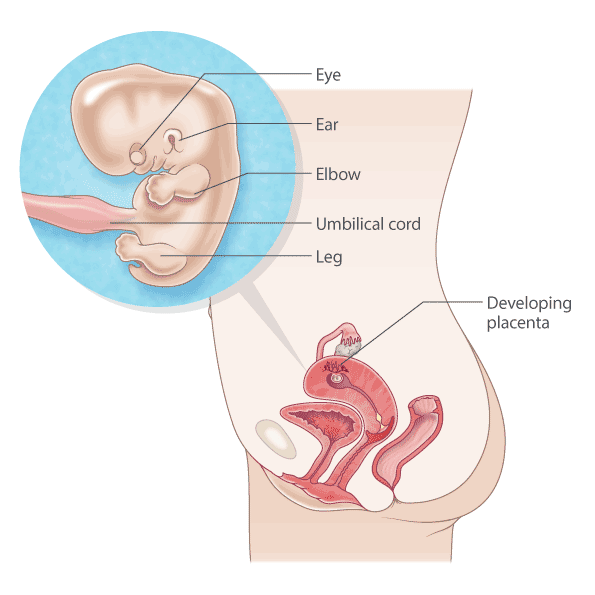You at 9 weeks pregnant
You might start to put on weight at this stage, which is normal. But you probably won’t have a noticeable baby bump yet.
Headaches are common. You can take paracetamol according to the instructions on the packet.
If you’re taking any other medicines, check with your doctor or midwife that these are safe for your baby. This includes prescribed medicines, vitamin or herbal supplements, and medicines from chemists and supermarkets.
Also ask your doctor or midwife whether your skincare products are safe to use during pregnancy.
Nausea peaks around this time. Talk with your doctor or midwife if you’re struggling with nausea, or there are health problems or changes that are really bothering you.
You’re more likely to get dental infections during pregnancy, so take extra care of your teeth and gums. Use soft toothbrushes and dental floss. Consider seeing your dentist for a check-up.

Pelvic floor muscles
The pelvic floor is a group of muscles and ligaments that support the bladder, uterus and bowel. It’s recommended that you exercise your pelvic floor muscles every day to prevent weakness and improve strength.
Talk to your doctor or midwife or a physiotherapist if you need help doing pelvic floor exercises.
Pelvic floor exercises will help to prevent urinary problems like incontinence later in pregnancy and after the birth. Pelvic floor exercises can also help with labour and recovery after birth. Regular exercise like walking can also help to strengthen your pelvic floor muscles.
Your baby when you’re 9 weeks pregnant
From this point on, the baby is called a fetus:
- Your baby is about 1.7 cm long, from head to tail.
- The head looks much more like a baby’s head now, although it’s big compared to the rest of the body. The facial features are more defined. The external and middle ear are taking shape, but babies can’t hear until about 24 weeks.
- Tiny blood vessels are visible underneath your baby’s transparent skin.
- Your baby’s skeleton is starting to form.
- Arms and legs are longer and slightly bent. It looks a bit like your baby is hugging themselves.
- The umbilical cord and placenta are developing.